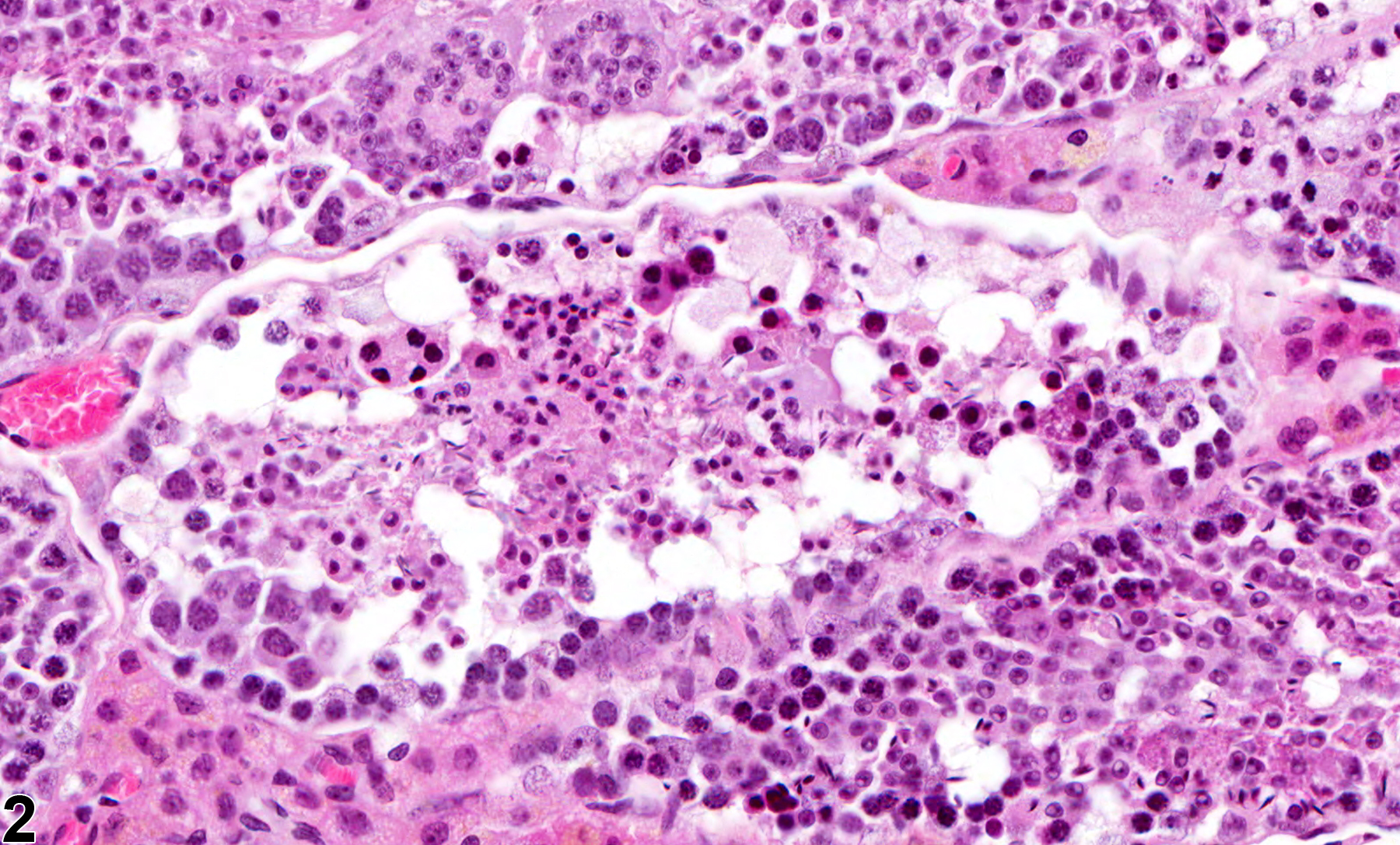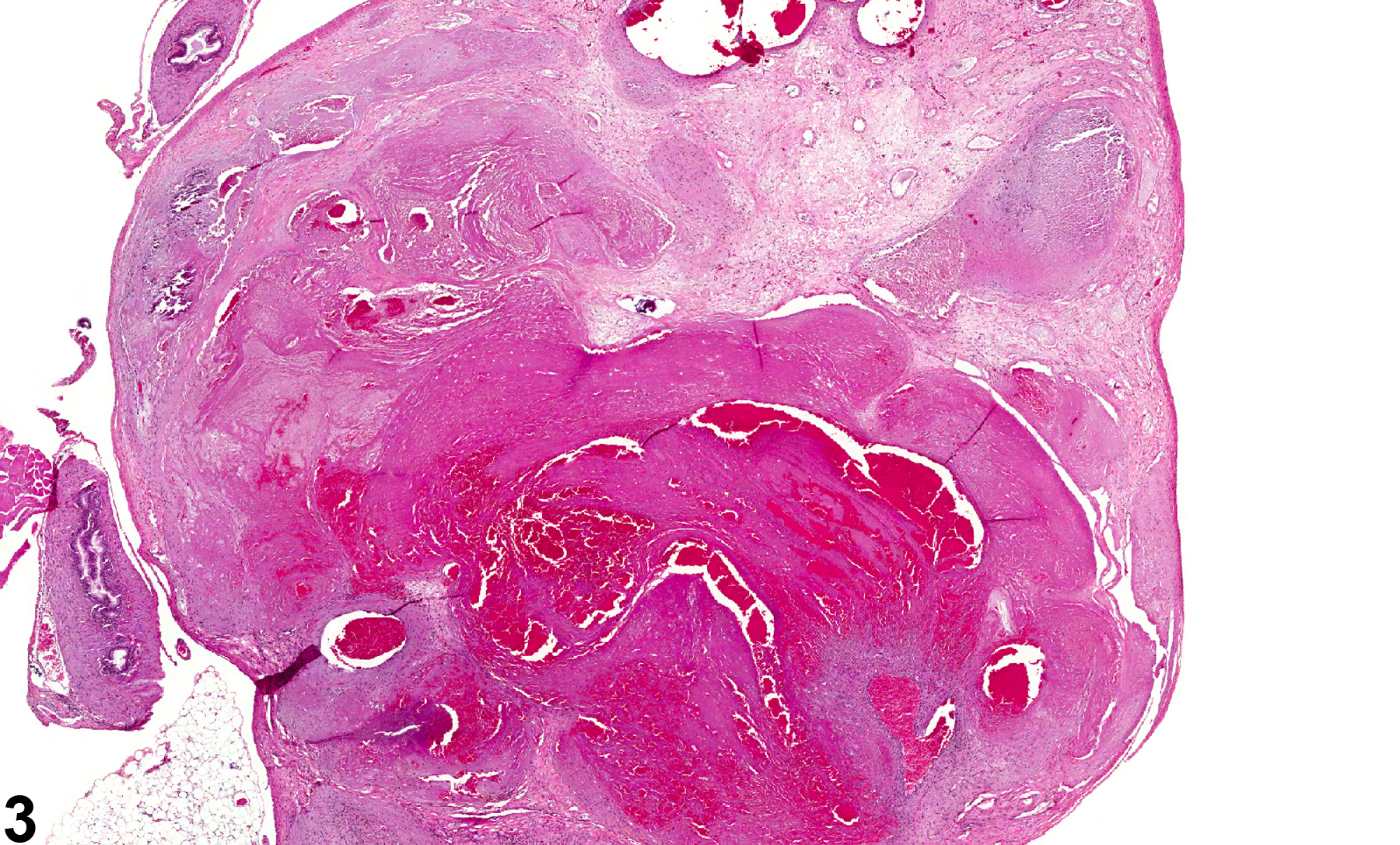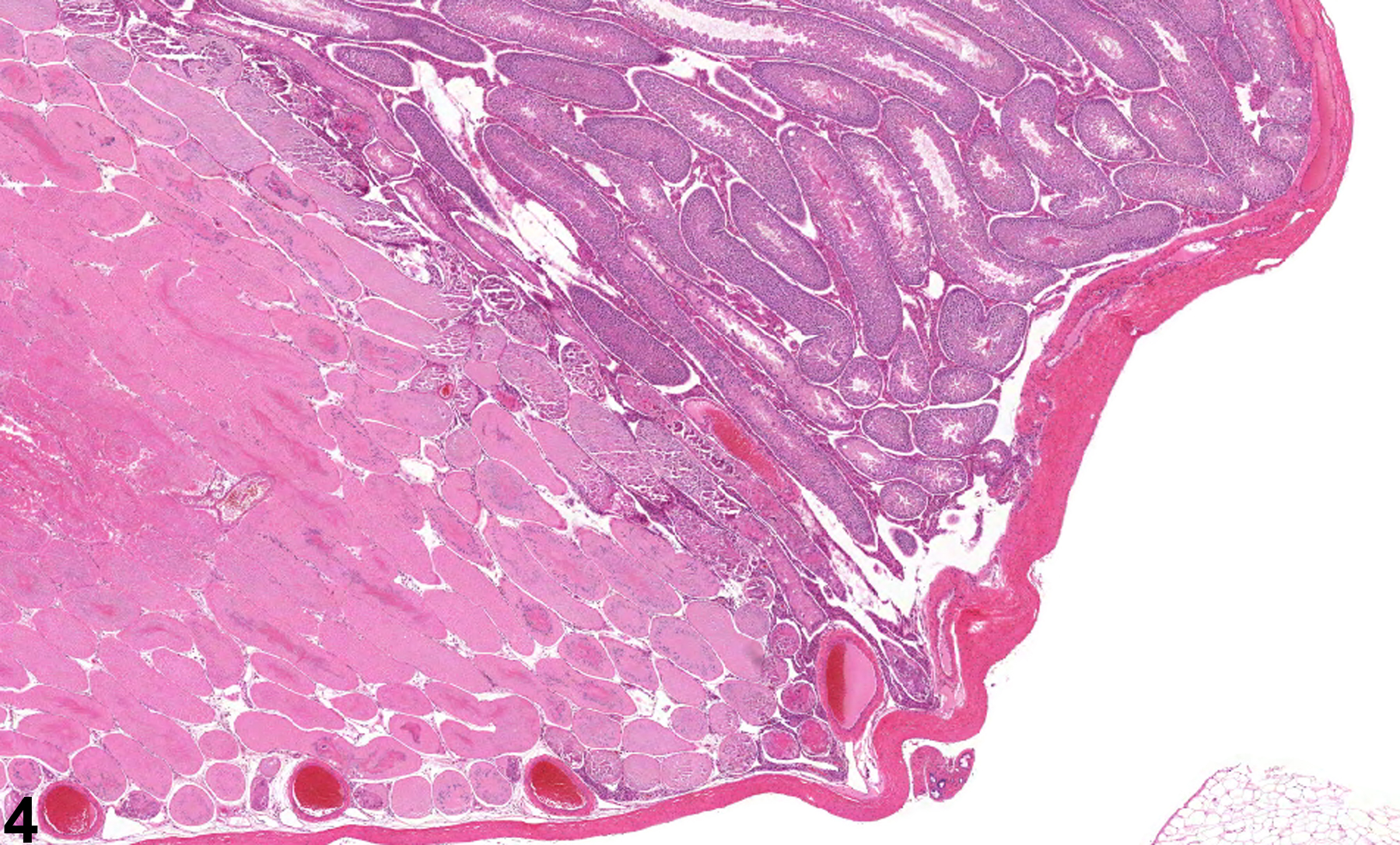Reproductive System, Male
Testis, Seminiferous Tubule - Necrosis
Narrative
Chemically induced testicular necrosis has been described in rodents administered cadmium, which is an endothelial toxicant in the testis of rodents. Necrosis can also be caused by agents causing vascular thrombosis in the testis. A characteristically focal necrosis at the frontal lower part of the rat testis (Figure 4) has been described following a single administration of human chorionic gonadotropin to rats. The necrosis was considered to be due to local ischemia caused by prostaglandin release from Leydig cells. Testicular necrosis is not reversible, due to loss of Sertoli cells and tubular structure, and the affected area is replaced by scar tissue. Extensive necrosis of the testis can also be caused by accidental intraperitoneal injection directly into the testis (which can occur because the rodent is able to retract its testes into the abdominal cavity).
Aoki A, Hoffer AP. 1978. Reexamination of the lesions in rat testis caused by cadmium. Biol Reprod 18:579-591.
Abstract: https://doi.org/10.1095/biolreprod18.4.579Creasy DM. 2001. Pathogenesis of male reproductive toxicity. Toxicol Pathol 29:64-76.
Full Text: http://tpx.sagepub.com/content/29/1/64.full.pdfCreasy D, Bube A, de Rijk E, Kandori H, Kuwahara M, Masson R, Nolte T, Reams R, Regan K, Rehm S, Rogerson P, Whitney K. (2012). Proliferative and nonproliferative lesions of the rat and mouse male reproductive system. Toxicol Pathol 40:40S-121S.
Abstract: https://doi.org/10.1177/0192623312454337
Testis, Seminiferous tubule - Necrosis in a male Swiss Webster mouse from a chronic study. This higher magnification of Figure 1 shows that both germ cells and Sertoli cells are undergoing necrosis.





